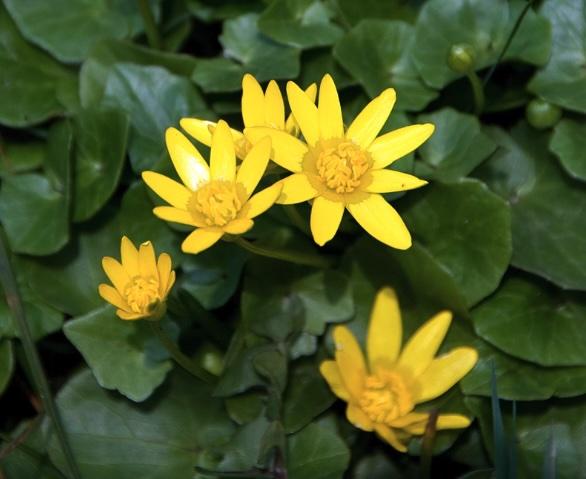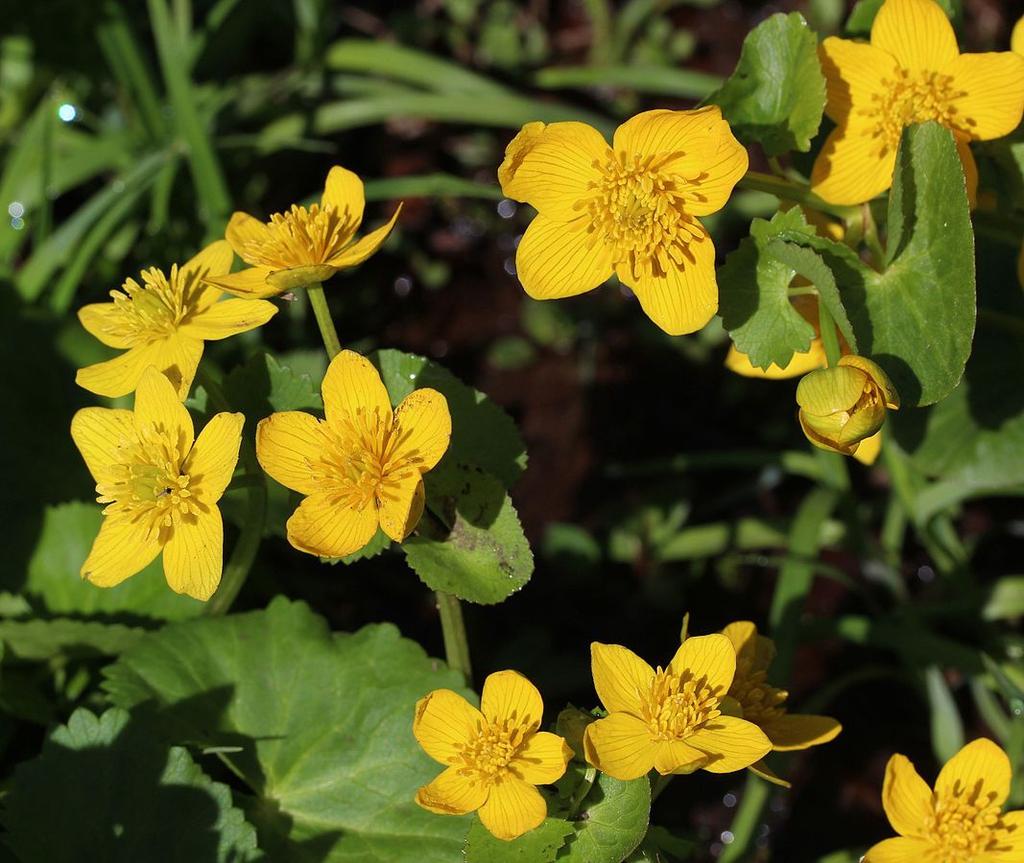
Lesser Celandine: Mike Pennington, via Wikimedia Commons
If you've recently taken a stroll through your local park, woodland, or even your own garden in early spring, you might have noticed a carpet of cheerful, bright yellow flowers spread across the ground. This charming plant could be Lesser celandine (Ficaria verna), also known as fig buttercup or pilewort. Although Lesser celandine may seem like a bright herald of warmer weather, this little plant poses a significant threat to native ecosystems.
Lesser celandine is originally from Europe but has become well-established in the United States. It often appears in floodplain forests, wet meadows, and roadside fields. The plant is classified as invasive because it forms dense mats that outcompete native plants. This growth habit is deceptive; although it disappears by late spring, it leaves bare patches of soil that are vulnerable to erosion.
So why should you care about removing Lesser celandine from your garden? While it may seem harmless, this aggressively spreading plant displaces native plants that are essential to pollinators, birds, and other wildlife. By monopolizing space and nutrients, it disrupts the delicate balance of local ecosystems. Preventing its spread helps protect biodiversity and maintain healthy soil structure.
How to Identify and Manage Lesser Celandine
Look for low-growing plants that are 4-12 inches tall, with shiny, dark green, kidney or heart-shaped leaves forming a basal rosette. Its

bright yellow flowers, about 1 inch wide, have 8 to 12 petals on single stalks above the leaves. The plant often appears in moist environments, particularly in early spring (March to April). It's important to distinguish it from the native marsh marigold, which also has small yellow flowers but grows differently and supports local ecosystems.

Management
For small infestations, hand-pulling is effective, but you must remove all bulblets and tubers to prevent regrowth. This task is easiest when the soil is moist, allowing you to extract the plant completely. For larger areas, careful application of herbicides like glyphosate can be effective if applied during a relatively brief window in early spring when the plant is blooming, typically late March to early April.
Reporting
The Midwest Invasive Species Information Network (MISIN) is a regional effort to develop and provide early detection and response resources for invasive species. To report suspected lesser celandine, use the Midwest Invasive Species Information Network (MISIN) online reporting tool. Be sure to note the location and include at least one photo of the plant.



